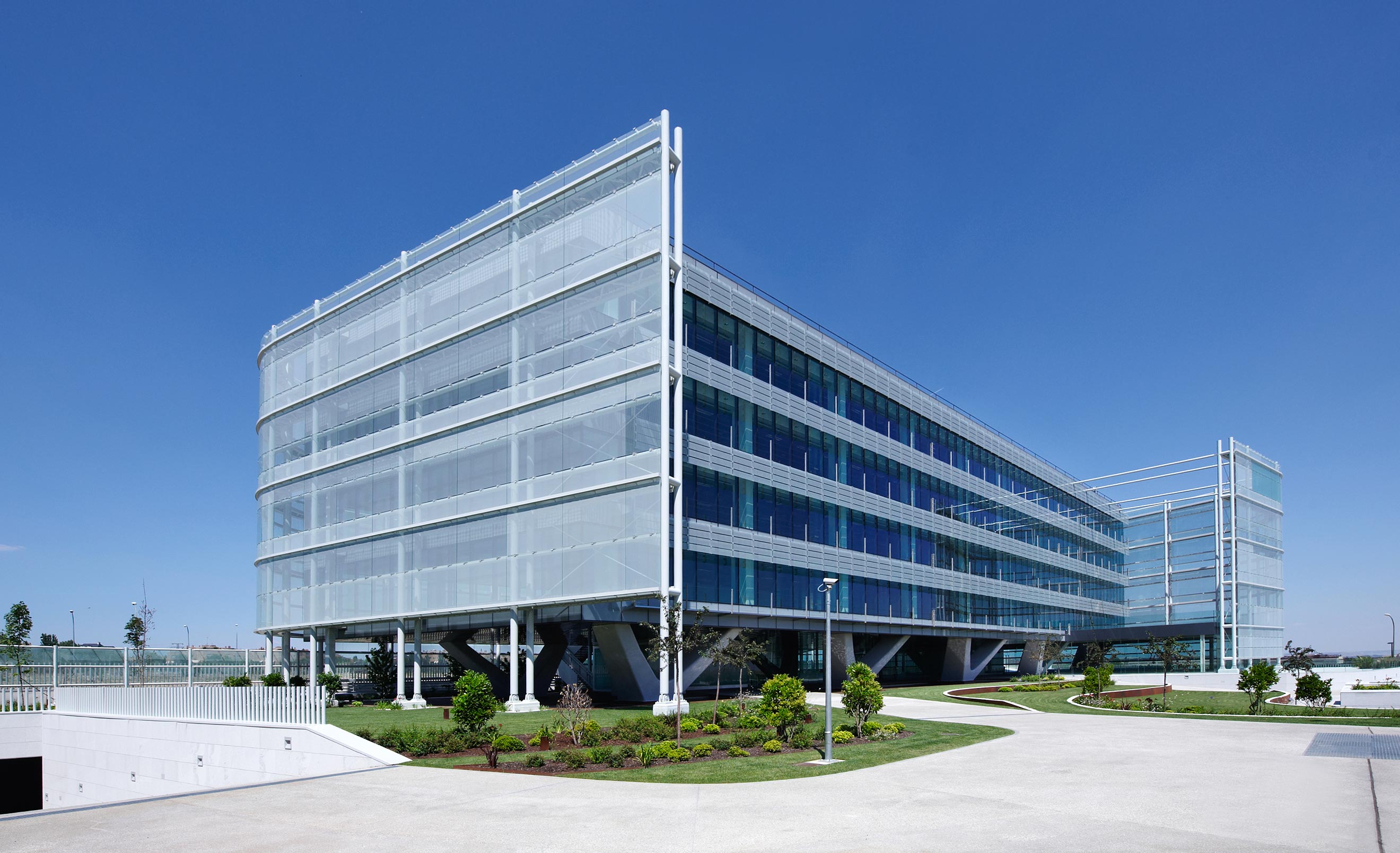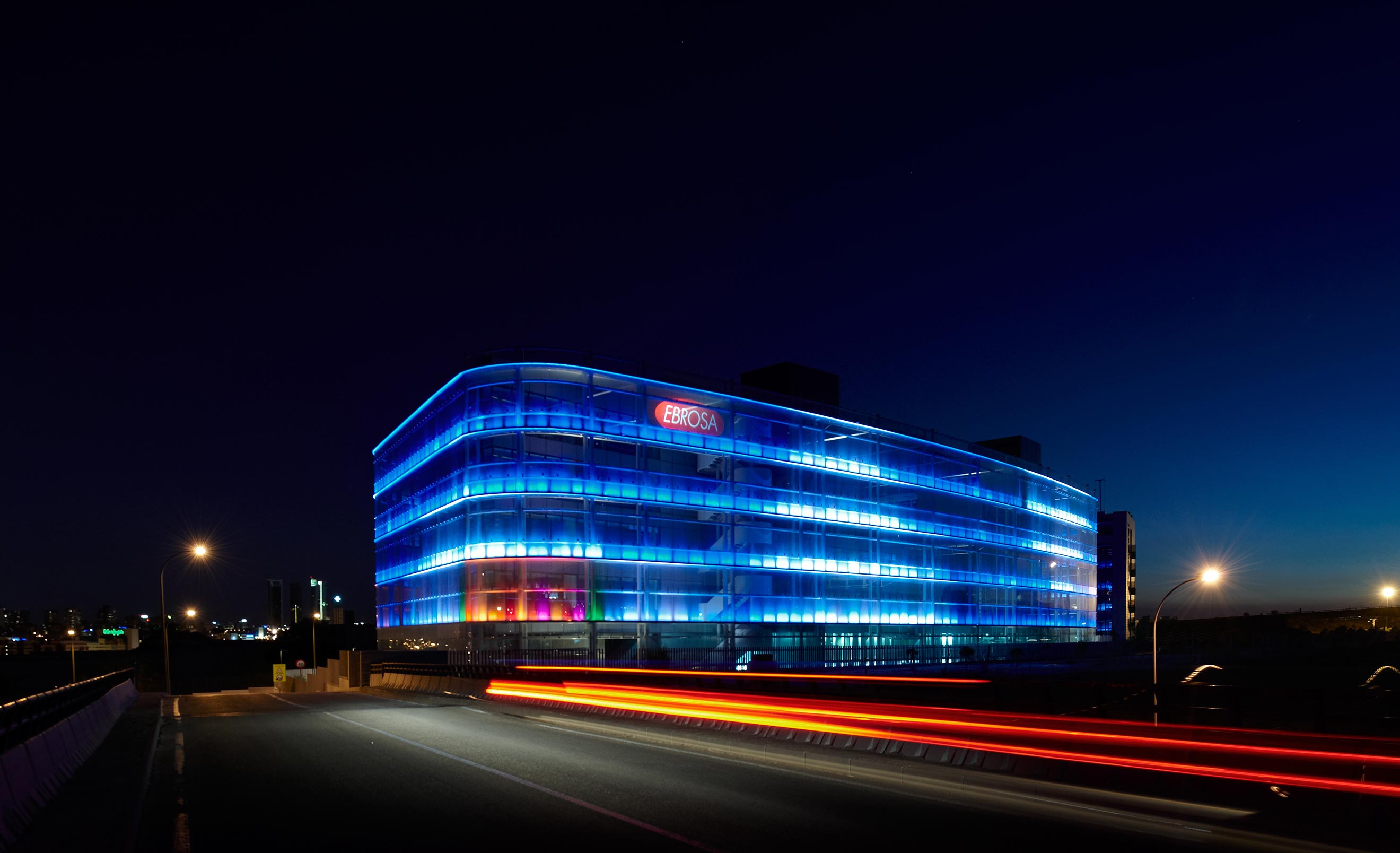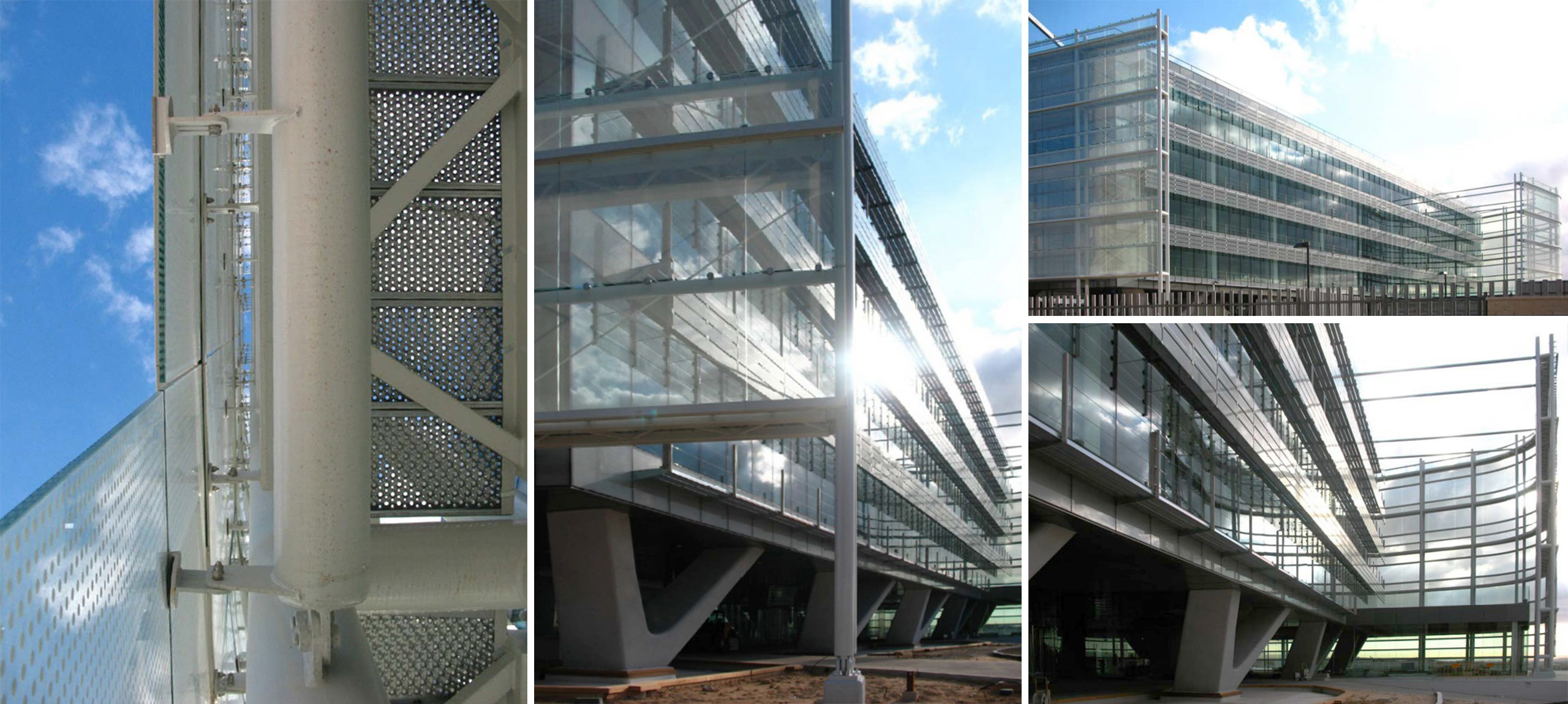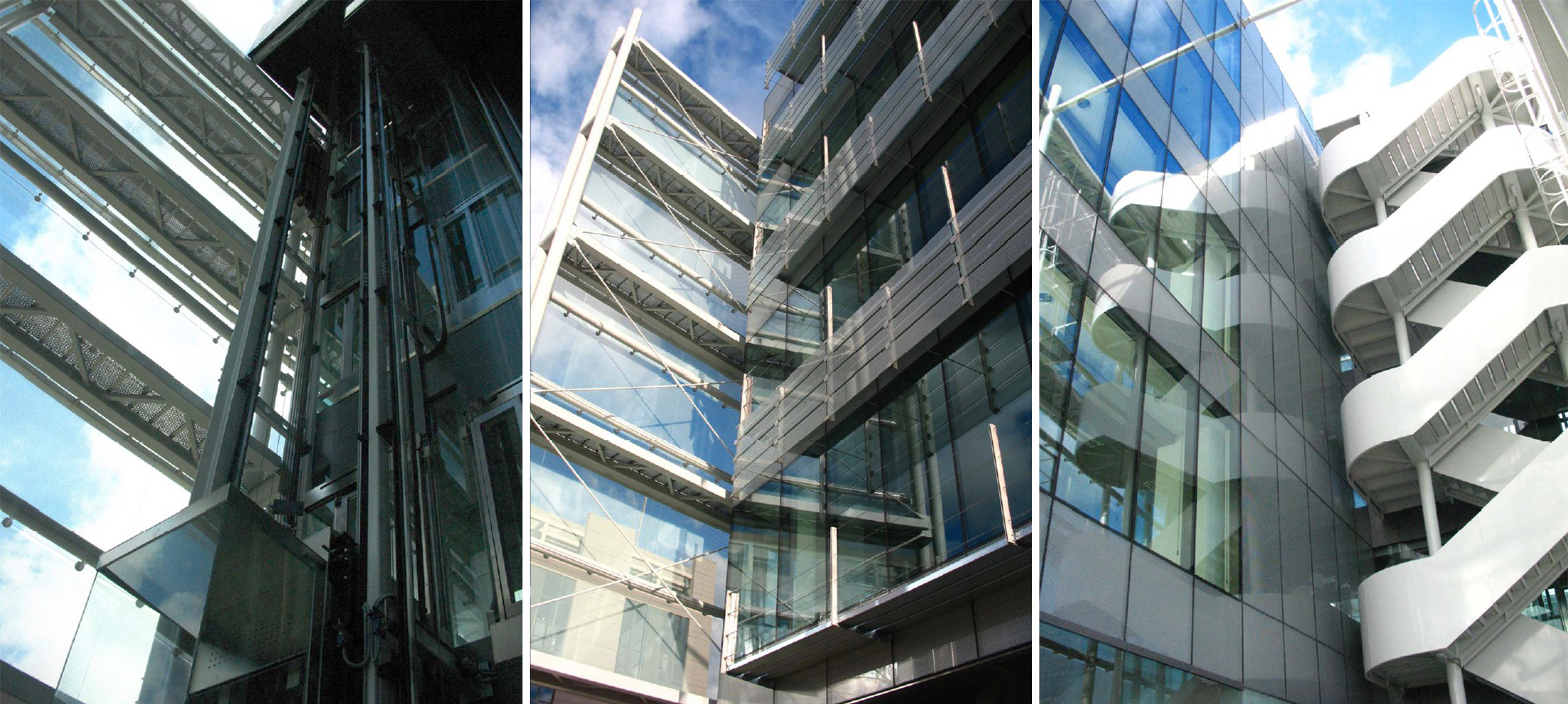
| Ebrosa Office Building | |
| Madrid, España | |
| Typologie | Office Buildings |
| Date | Janvier, 2010 |
| Mission | Detailed design and construction monitoring |
| Architecte | Estudio Lamela & Hok |
| Constructeur | Ferrovial |
| Maîtrise d'ouvrage | Ebrosa |
The building is composed of 5 storeys above grade, practically rectangular in shape, 76.0m x 17.5m, and covers a surface area of 1,530m2. There are 4 levels below grade. The dimensions of these floors are approximately 95.0m x 51.0m covering a total surface area of 4,900m2.
Its façade is composed of an external skin made up of a myriad of different types of glass which are held together on a metal framework, and rises over the M40 motorway offering a magnificent hallmark of its identity. The building is interconnected via a series of gangways set at different levels.
The horizontal structure is completely executed employing grid slabs. It would be worth differentiating between the grid slabs on the typical floor, ground floor and basement -1, whose characteristics are as follows:
− TYPICAL FLOOR: Post-stressed grid slab 40+10 (cm), nerve width 18 cm, interaxial distance between nerves 86 cm. Spans 16.10 m in N-S direction and 8.10 m in E-W direction.
− GROUND FLOOR: Grid slabs 35+15 (cm), nerve width 16 cm, interaxial distance between nerves 84 cm. Maximum spans 8.98.
− BASEMENT FLOOR -1: Grid slabs 25+10 (cm), nerve width 16 cm, interaxial distance between nerves 84 cm. Maximum spans 8.98.
Its façade is composed of an external skin made up of a myriad of different types of glass which are held together on a metal framework, and rises over the M40 motorway offering a magnificent hallmark of its identity. The building is interconnected via a series of gangways set at different levels.
The horizontal structure is completely executed employing grid slabs. It would be worth differentiating between the grid slabs on the typical floor, ground floor and basement -1, whose characteristics are as follows:
− TYPICAL FLOOR: Post-stressed grid slab 40+10 (cm), nerve width 18 cm, interaxial distance between nerves 86 cm. Spans 16.10 m in N-S direction and 8.10 m in E-W direction.
− GROUND FLOOR: Grid slabs 35+15 (cm), nerve width 16 cm, interaxial distance between nerves 84 cm. Maximum spans 8.98.
− BASEMENT FLOOR -1: Grid slabs 25+10 (cm), nerve width 16 cm, interaxial distance between nerves 84 cm. Maximum spans 8.98.








